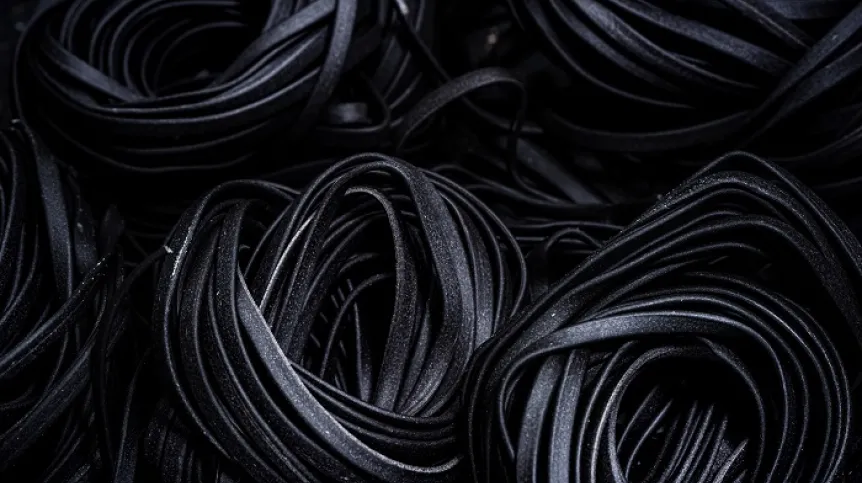
Polish researchers have synthesized polymers that were too expensive to freely conduct research on. They now have a whole library of compounds allowing them to select carbon nanotubes for nanomedicine and photovoltaics.
‘The polymers will gladly cling to the smallest nanotubes,’ says Professor Dawid Janas.
His team from the Department of Organic, Bioorganic Chemistry and Biotechnology of the Faculty of Chemistry, Silesian University of Technology, selects nanotubes with specific properties for research. It is not easy, because tiny graphene rolls made of carbon and hollow inside are tangled together, and on a macro scale they are just a handful of black dust.
EVERYONE: UP TO $1,000 PER GRAM
The scientists used conductive polymers and organic solvents to purify mixtures of carbon nanotubes in such a system.
Professor Janas says that conductive polymers are particularly fond of carbon nanotubes. Depending on the structure of the polymer, they wrap around selected types of nanotubes more or less willingly. This paves the way to using such polymers to extract the desired types of carbon nanotubes in toluene. Well-wrapped in polymer, selected nanotubes go into solution, and the rest stays at the bottom.
This promising method was developed about a decade ago, but since then scientists have found only two systems that allow scientists to obtain pure fractions of carbon nanotubes (most likely by chance, as is usually the case in science - the researcher suspects).
He points out that conductive polymers with favourable properties for this application are very expensive. 'Their prices often exceed a thousand dollars per gram. Therefore, for financial reasons, the possibility of conducting in-depth research in this field is severely limited. Usually, a few or a dozen parameters are tested, counting on luck,’ says Janas.
POLISH SCIENTISTS: WE WILL DO IT TEN TIMES CHEAPER
'We decided to overcome this problem by synthesizing these materials in-house and reducing the cost of research by a factor of ten. We obtained a library of conductive polymers for thorough testing. Thanks to extensive research, we optimised the conditions to isolate the desired type of nanotubes - the smallest one obtained so far in an organic environment,’ Janas continues.
He adds that the mechanism of extraction remains unexplained in literature, and extensive research has allowed his group to better understand this process and act 'in a thoughtful way', instead of hoping for another happy accident. What's more, thanks to the new possibilities of conducting research, Silesian scientists noticed a serious mistake of other experts.
USELESS OR GROUNDBREAKING
The Polish scientists have discovered that one of the conductive polymers previously rejected by other scientists (poly(9,9-dioctylfluorene-alt-benzothiadiazole, considered useless) can be used to separate type (7.3) carbon nanotubes with a diameter of 0.706 nm. For laymen, it is enough to know that their small size makes them particularly important for nanomedicine and photovoltaics. More on this topic - here: https://scienceinpoland.pl/en/news/news%2C95581%2Cnanotube-big-fish-bait-save-most-valuable-nanotubes.html
'Despite this achievement, we were not satisfied. While this groundbreaking material was very pure, the obtained amounts of the material were unsatisfactory. We began to wonder how to increase its amount while maintaining high purity (usually in the world of nanomaterials you can have either, but not both). This is where a kitchen analogy came in handy', says Professor Janas, who has already popularised his group's research in PAP - Science in Poland. He compared improving the properties of nanotubes to salting a soup (https://scienceinpoland.pl/en/news/news%2C94013%2Cluminescent-click-nanotubes-help-diagnose-heart-disease-and-cancer.html)
NANOTUBES BETTER THAN SPAGHETTI PASTA
As the scientist says, when cooking spaghetti (that has a shape that resembles nanotubes), many people add another liquid (oil or olive oil) to the water so that it does not stick together.
'However, this is an often repeated culinary myth, because not only the pasta still sticks, covering it with such a greasy layer also prevents sauce from sticking to it later. Our +nanotube pasta+, however, behaves as expected,’ says Janas.
The extraction of carbon nanotubes with a conductive polymer is carried out in toluene. The researchers found that if a second liquid (tetralin) was added to the toluene, the nanotubes they wanted would not stick to each other and would 'more willingly' go into solution.
'In such a mixture of solvents (we do not drain them like pasta) they are even better coated with our polymer +sauce+, which enables their selective extraction, which dramatically increases the amount of obtained material.
‘At the same time, all other types of nanotubes remain at the bottom of the test tube,’ Jana says.
The professor adds that several different types of nanotube pasta are cooked in one pot, and only one of them floats to the surface.
The results of research carried out with the financial support of the Polish National Science Centre and NAWA have been published by the journal Small.
PAP - Science in Poland, Karolina Duszczyk
kol/ zan/ kap/
tr. RL













